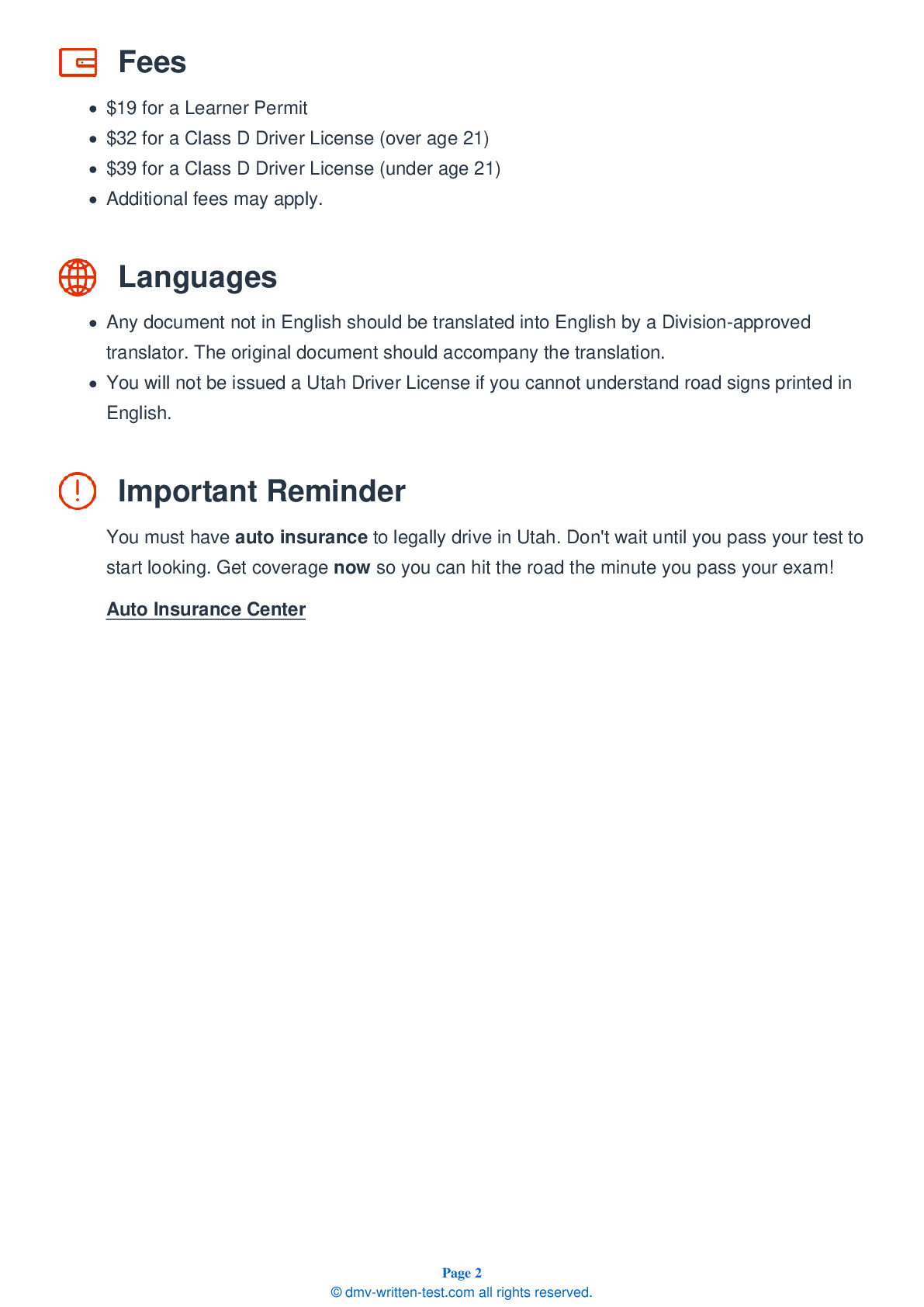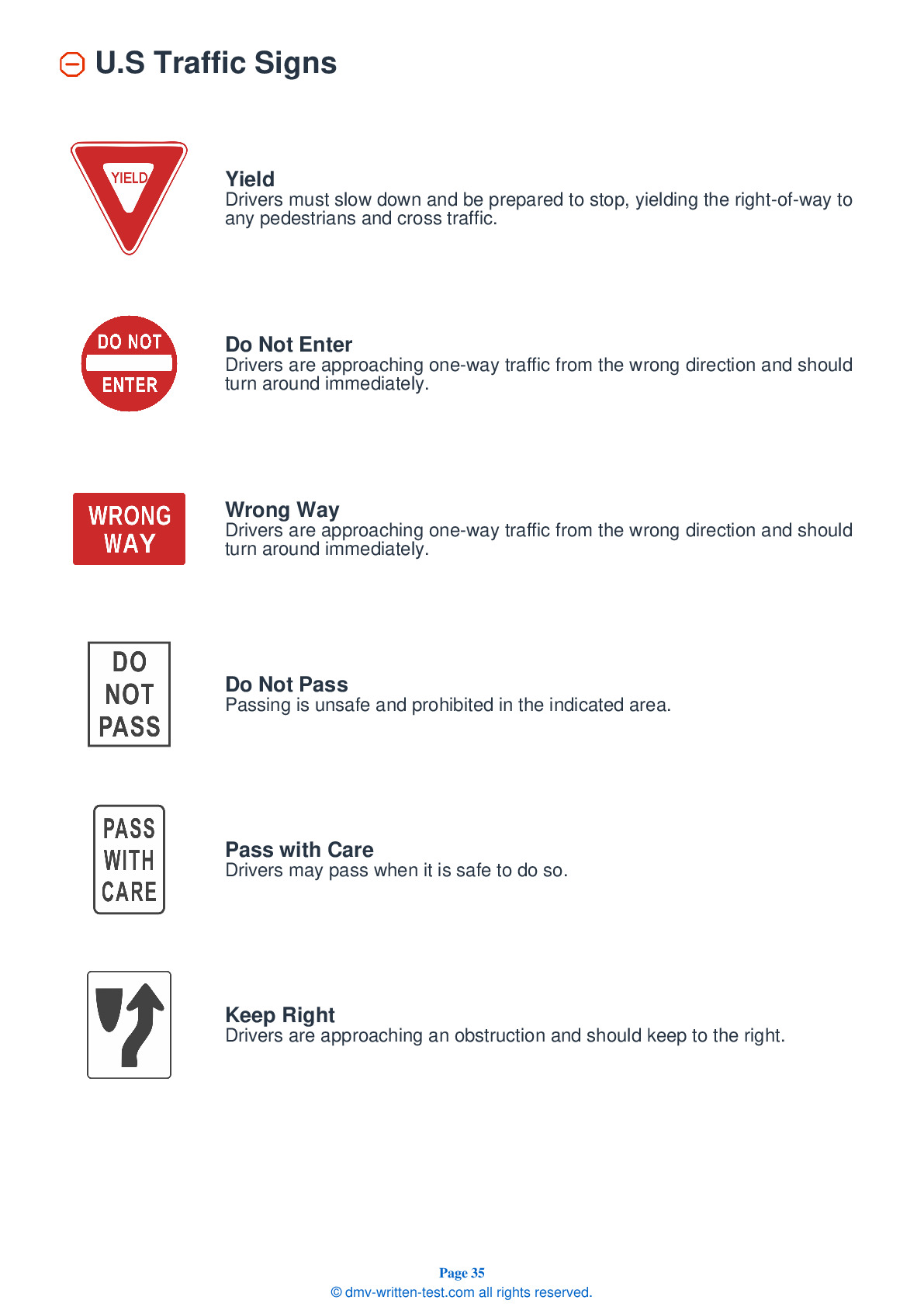2025 Utah Permit Test 9
The following questions are from real DMV written tests. These are some of the actual permit questions you will face in Utah. Each permit practice test question has three answer choices. Select one answer for each question and select "grade this section." You can find this button at the bottom of the drivers license quiz. For a complete list of questions and answers for Utah please visit https://cheat-sheets.dmv-written-test.com/en/utah/car.
Number of Tests
Number of Question
Passing Score
9. A driver does not need to allow as much distance when following a motorcycle as when following a car.
Explanation
In dry conditions, motorcycles can stop more quickly than cars. Therefore, a driver behind a motorcycle should allow at least three to four seconds of following distance so that the motorcyclist has time to maneuver in an emergency.
10. If you need to slow down while driving on a slippery road, the first thing you should do is:
Explanation
To slow down on a slippery road, you should first take your foot off the gas pedal. If you need to slow down even more, gently apply a slow, steady pressure to your brake pedal.
11. When driving on wet pavement, it's important to remember:
Explanation
Wet roadway surfaces can be dangerously slick, especially immediately following a rainfall. When you are driving on wet roads, your vehicle is traveling on a thin layer of oil, dirt, and water. Slow down when there is heavy rain, standing water, or slush on the road to reduce the risk of your wheels losing traction on the slick surface.
12. When dealing with pedestrians, a driver must:
Explanation
You must do everything you can to prevent striking a pedestrian or another vehicle, regardless of the circumstances. It is the driver’s basic responsibility to be alert to pedestrians and to yield the right-of-way to all pedestrians, even if the pedestrian is crossing the street where they should not be.
13. When driving on an interstate:
Explanation
Signal, check your mirrors, and check your blind spot before changing lanes or passing on an interstate. Only stop on the shoulder of the interstate in the case of an emergency and change lanes as infrequently as possible. Cruise control should not be used in heavy traffic or under poor weather conditions.
14. A person who drives much slower than the speed limit:
Explanation
Driving more slowly than the flow of traffic can be hazardous. If you are on a two-lane, two-way road and driving so slowly that traffic is backing up behind you, you are required to pull off the road and let the other vehicles pass. Only drive significantly under the speed limit when conditions require it.
15. You are approaching a railroad crossing that has no visible gates or flashing lights, but has a standard crossbuck. You should:
Explanation
You must approach all railroad crossings with extreme caution and cross only when you know that no train is coming from either direction. If there is a flagger at a crossing, you must obey all of their instructions.
16. What do speed limit signs indicate?
Explanation




